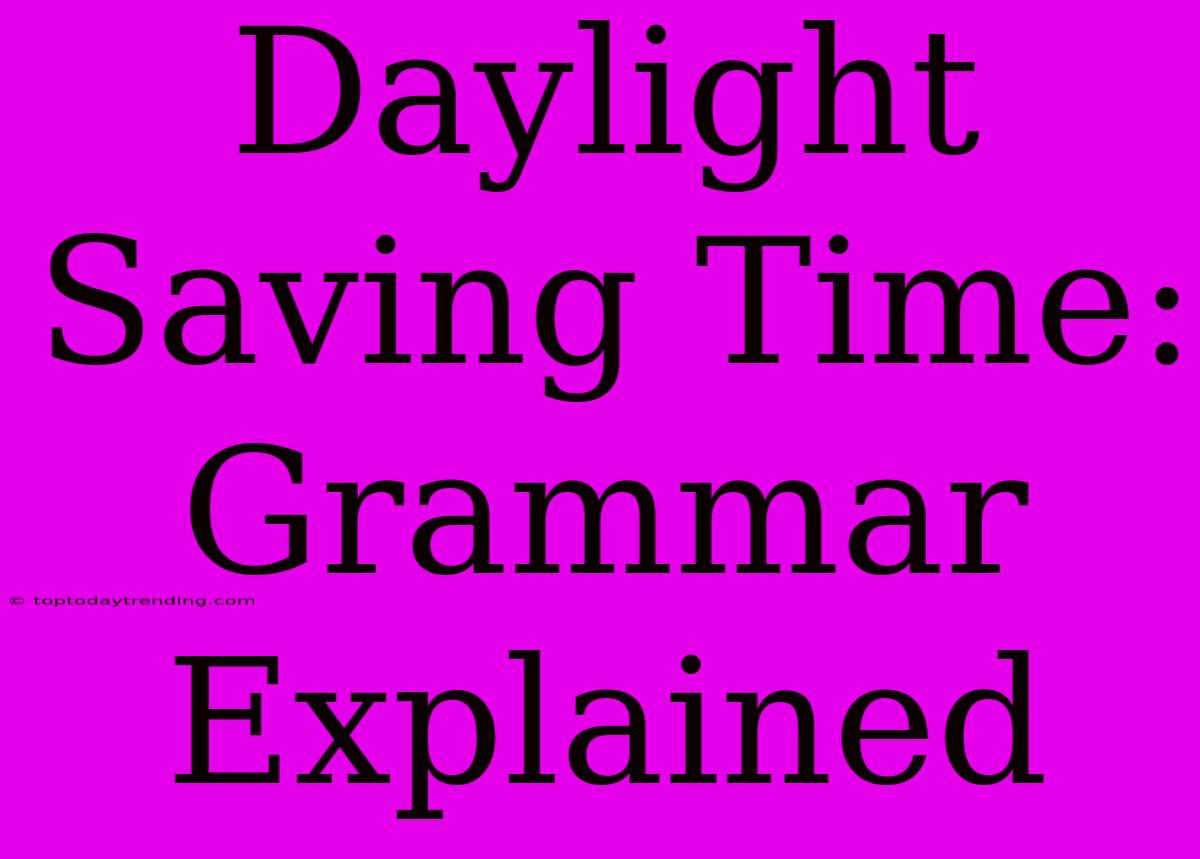Daylight Saving Time: Grammar Explained
Daylight Saving Time (DST) is a practice observed in many parts of the world, where clocks are adjusted forward by one hour during the summer months to take advantage of longer daylight hours. While the concept is simple, the grammar used to discuss DST can be a bit tricky. Here's a breakdown of common grammar points to help you navigate this seasonal shift with confidence:
"Saving" vs. "Savings"
The most common grammatical error in DST conversations is using "savings" instead of "saving." "Savings" refers to money that has been saved, while "saving" is a verb meaning "to preserve or conserve". Since Daylight Saving Time is about conserving daylight hours, the correct word to use is "saving".
For example:
- Correct: "Daylight Saving Time is designed to save energy."
- Incorrect: "Daylight Saving Time is designed to give us energy savings."
"Clocks Go Forward" vs. "Clocks Go Back"
Another common point of confusion is the direction the clocks move. We "spring forward" by moving the clocks ahead by one hour in the spring, and "fall back" by moving them back an hour in the fall.
- "Spring Forward" - This phrase is used to describe the change in the spring when clocks are moved forward.
- "Fall Back" - This phrase refers to the change in the fall when clocks are moved back.
For example:
- Correct: "Remember to spring forward on the second Sunday in March."
- Correct: "Fall back one hour on the first Sunday in November."
"Daylight Saving" vs. "Daylight Savings"
Although the plural form "Daylight Savings" is often used, the correct term is "Daylight Saving Time". This is because the phrase refers to the time itself, not multiple instances of savings.
"Standard Time" vs. "Daylight Time"
When discussing DST, it's crucial to distinguish between "Standard Time" and "Daylight Time." Standard Time refers to the regular time zone setting, while Daylight Time refers to the adjusted time during the summer months.
For example:
- "During Daylight Saving Time, we are on Daylight Time."
- "When Daylight Saving Time ends, we switch back to Standard Time."
Usage in Sentences
To further understand how to use these terms grammatically, here are some examples:
- "The United States observes Daylight Saving Time from the second Sunday in March to the first Sunday in November."
- "When Daylight Saving Time begins, we spring forward one hour."
- "Remembering to change the clocks for Daylight Saving Time can be a challenge."
- "Some argue that Daylight Saving Time is no longer necessary due to the increased use of artificial lighting."
By following these grammatical guidelines, you can confidently discuss Daylight Saving Time and avoid common errors.

